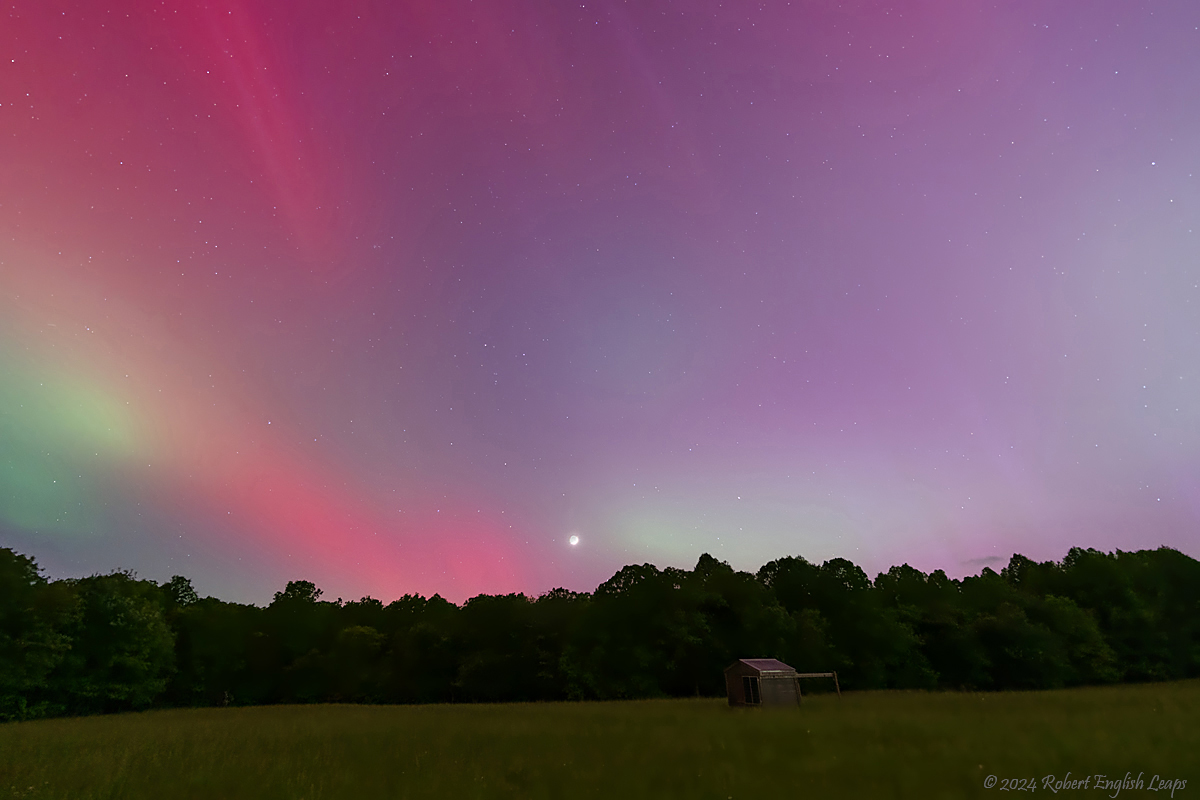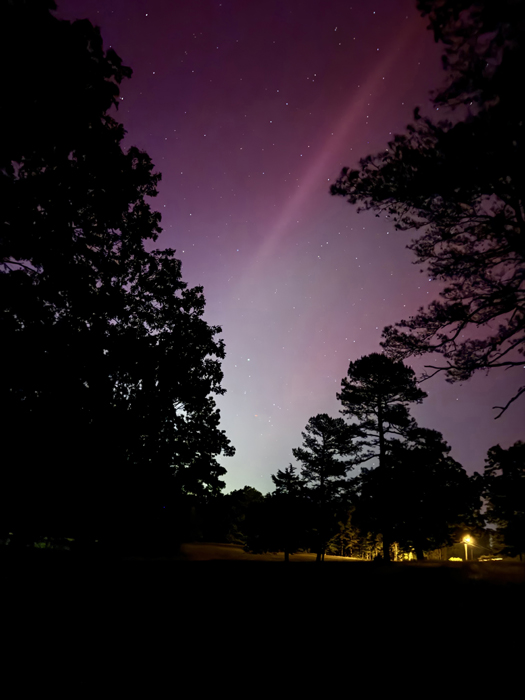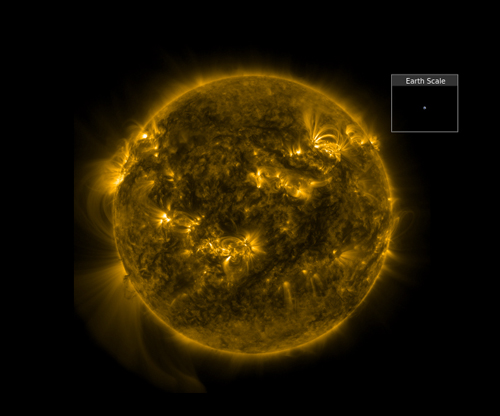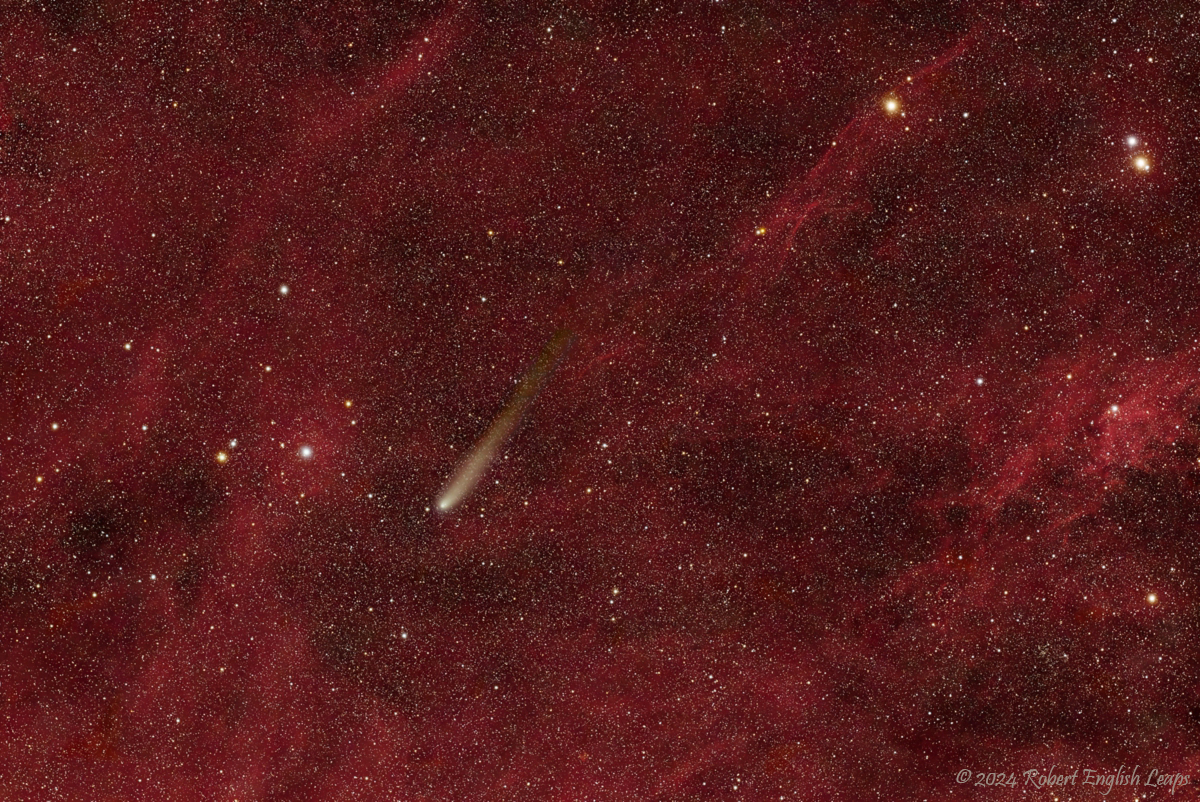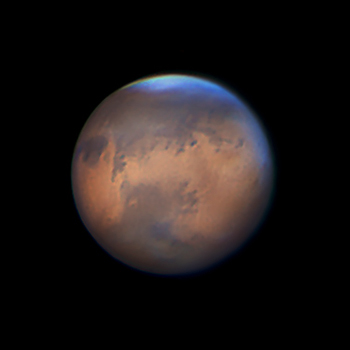The purpose of this feature is to give scout leaders, educators and naturalists an idea of some of the natural events coming up each month. We will try to cover a variety of natural events ranging from sky events to calling periods of amphibians, bird and mammal watching tips, prominent wildflowers and anything else that comes to mind. We will also note prominent constellations appearing over the eastern horizon at mid-evening each month for our area for those who would like to learn the constellations. If you have suggestions for other types of natural information you would like to see added to this calendar, let us know! Though we link book references to nationwide sources, we encourage you to support your local book store whenever possible.
Notes From May 2024 May was a colorful month in many ways. In between bouts of severe weather we found a lot that caught our eye. First of all there was the big 13-year cicada get together. In Nashville, we first saw them emerging on the 5th. You know you're getting a little older when you have talked about the last two previous 13-year cicada emergences in previous Natural Calendars.
I wrote about them in the "Notes From May 2011" part of the June 2011 Natural Calendar. Here's how I described the craziness then: "Last month, we talked of the 1998 emergence of 13-year cicadas and their predicted return this May. Well, return they did. After 13 years of living in the soil, they came back with a vengeance, ready to slip the surly bonds of Earth. We saw our first this year on May 7th. Each day seems to bring more. They perch in the morning sun atop high grass, bushes and small trees, ready to warm up and take flight. Some fly well. Others look like they should have spent more time on the pre-flight checklist, taking off only to veer to one side and crash back to the ground. Some careen off the sides of buildings, some bounce off windshields, some are snapped up by birds and dogs and other hungry animals. A few people freak out. Those ducking indoors often find a cicada has hitched a ride inside. People talk to complete strangers about the “invasion”, their childhood memories and the ominous "W" seen in the wings. And everywhere, the calls fill the air."
previous emergence in 1998 and the next emergence in 2024. This brood's range in Tennessee is shown on the accompanying map, and it occurs only in a third of Tennessee by area. There are four species of 13-year cicadas that belong to Brood XIX. All belong to the genus Magicicada. The three species that occur in Tennessee are Magicicada tredecassini, Magicicada tredecula and Magicicada tredecim. All look similar from above, but have varying patterns on their abdomen. The fourth species, Magicicada neotredecim, does not occur in Tennessee. All three of the Tennessee species can sometimes be heard calling together. The call of Magicicada tredecassini is a loud buzzzzzzz sometimes preceded by a few random clicks. The call of Magicicada tredecula is a series of evenly-spaced clicks that sounds like an old-fashioned lawn sprinkler. Finally, the rather wonderful call of Magicicada tredecim is a long, high note that descends suddenly at the end. It has been phonetically rendered as, "Phaaaaaaaaaaa-raoh", with the second syllable dropping about 5 notes in pitch. We made this recording along the Little Harpeth River in Williamson County on May 30th, 2011. In it you can hear all three species. Listen for the lawn sprinkler sound of the tredecula first, then listen for the prominent buzz of a cassini. While the "Phaaaaaaaaaaa-raoh" sound of the tredecim is present throughout, it's easier to hear at the end of the cut. A Tufted Titmouse and an Eastern Wood-Pewee can also be heard calling. Earphones will allow you to hear more. The adult cicadas only live a few weeks after emerging from their long stay underground. I, for one, do not begrudge them their time in the sun. On the afternoon of May 10th, I came across a short article in the New York Times that talked about recent coronal mass ejections from the Sun and the possibility of a powerful display of the Northern Lights. Although the map did not show the range of the expected aurora extending as far south as Tennessee, it sounded promising.
I immediately gathered what I thought I might use just in case we did get a light show. I then set up my small astrograph to try and capture a comet that would rise later that night. At dusk, I polar-aligned the astrograph in my back yard and then drove out to the observatory, getting out there about 9:45pm, about twenty five minutes before astronomic dusk. I saw nothing at first and looked back over the NASA Space Weather Prediction Center forecast from my car seat, facing north. I was just thinking there was a pretty good chance I would see nothing at all when I became aware of a hazy glow to my left. The entire western sky above my observatory was glowing! It was 10:00pm EDT. I immediately began taking images with my cell phone in the night mode, just to make sure I had a few images. The colors are brighter in the images, but the reds and greens were easy to see with the naked eye. I was stunned!
I was amazed at how fast the colors and patterns shifted. Most of the brightest parts of the display occurred within the first 30 minutes. Then it started slowly winding down. The video at right shows some of the images in chronological order. It's been over 20 years since we saw the aurora in Franklin, Tennessee. But this display was much brighter! Earth is constantly bombarded with charged particles from the Sun that are carried to us by the solar wind. Localized magnetic variations on the surface of the Sun create solar flares and coronal mass ejections. The intensity of the magnetic variations, and hence the solar wind, varies in a 9-13 year cycle from one solar maximum to the next. Both solar flares and coronal mass ejections are typically associated with large sunspot groups. During a magnetic storm, solar flares and coronal mass ejections can dramatically increase the intensity of the solar wind. If the solar wind is strong enough it creates a magnetic storm in Earth's magnetosphere.
Earth's magnetic field, which is thought to be formed by a geodynamo, is distorted by the solar wind, but it still keeps harmful radiation from reaching the surface of Earth. But charged particles in the solar wind collide at high speed with molecules of oxygen and nitrogen in Earth's upper atmosphere. This interaction occurs in the ionosphere. These molecules are ionized by the collision, and as they return to their original state they emit the excess energy in the form of light. The green and red colors are caused by ionized atoms of oxygen, the green from oxygen atoms 100 to 150 kilometers above the ground, and the red from oxygen atoms 150 to 350 kilometers above the ground. A background of purple or mauve color is due to excited atoms of nitrogen, typically 250 to 400 kilometers above the ground. Other colors, like lilac-pink or turquoise are also thought to be caused by nitrogen atoms.Around May 3rd, the largest group of sunspots recorded in the current solar cycle began emitting solar flares of the X-class. The X class designation is reserved for the strongest flares. The solar storm created by these flares has been rated as a G5 magnetic storm, the highest rating on a scale of 1-5. This storm resulted in the auroral display on May 10th. Remember that you should never look directly at the Sun, and should never view it through a telescope without the proper safety filters. You can do permanent damage to your eyes in a instant.
You can pull up data taken within an hour of the present time and switch views from the 'flares and active regions" to "sunspots" to "magnetic field" . Just go to the student helioviewer here. You can also check historical data from the time of any recent activity by changing the observation date. A handy user guide can be accessed by clicking the question mark at the right of the home page. It remains to be seen if we have more strong magnetic storms in the coming months, but wow, what a show! After being immersed in the auroral display, I returned to the astrograph I set up earlier in the evening and began taking images. My target was a small comet that was crossing some of the rich star fields of the constellation Cygnus. Although the field of view showed no deep sky objects other than a couple of dark nebulae, I knew that very faint nebulae extend over large parts of the constellation. These nebulae shine in light emmitted by ionized hydrogen atoms in the reddish hydrogen alpha wavelength.
I was surprised at just how much faint nebulosity the scope managed to capture. Unlike Comet 12P Pons-Brooks, this comet was difficult to capture, but it's interesting to note that its orbit extends out to a distance of 29,000 astronomical units, or over 1,000 times the maximum distance of Comet Pons-Brooks. When Comet C2021 S3 (PANSTARRS) next rushes by the Sun, it will be July, 4214. As Carl Sagan and Ann Druyan said in their book, Comet, "Like a breaching whale before it plunges into the ocean depths, a comet briefy luxuriates in the sunlight and then is gone."
On May 21st I came across this Lancet Clubtail on a sandy farm road at Cloudland. I was drawn to the contrast in texture between the sand and the smooth, elegant, 2024-model-right-off-the-showroom-floor glossiness of the dragonfly.
Sky Events for June 2024: The Summer Solstice for the Northern Hemisphere occurs on June 20th at 4:51pm EDT. This is the longest day of the year for the Northern Hemisphere. We recommend checking the NASA Space Weather Prediction Center forecast every few days. The Sun rotates about its axis in approximately 27 days. The sunspot region that was responsible for the auroral display on May 10th will be in the same orientation around June 6th. There may be more magnetic storms coming.
Morning Sky:
Mars rises around 2 hours and 20 minutes before sunrise at the beginning of the month in Pisces. Binoculars will show you the red color quite well. Thirty minutes before sunrise look for it in the eastern sky about 20 degrees above the horizon. Saturn rises about 3 hours and 45 minutes before sunrise at the beginning of the month in Aquarius. Thirty minutes before sunrise look for it above the southeast about 35 degrees above the horizon. The two planets and the waning crescent Moon should make for a pretty sight in the first few days of the month. If you are looking on the morning of July 3rd you will want to use the same technique. If you want to see Uranus and Neptune, keep in mind that even with a dark sky and binoculars, plus a good finder chart or app like Sky Safari, they are not particularly easy to find. Some descriptions of the "2024 planetary alignment" suggest you can just walk outside and view them with your naked eye. With a few resources and some patience they are visible, but not particularly easy if you are just learning the sky, and the twilight sky will make them very difficult if not impossible to see, even with binoculars.
New constellations this month in the eastern sky are Lyra, the Lyre, with its bright star Vega, Cygnus, the Swan, and Aquila, the Eagle. The bright stars Vega, Deneb and Altair form the "summer triangle." The galaxy Messier 106 hangs below the "Big Dipper" just over the border of Canes Venatici, the Hunting Dogs. Its bright core contrasts with its rather faint spiral arms. My notes show that it was not hard to see in my little 22 power, 60mm spotting scope. In a dark sky you should be able to see it as a very faint misty spot in binoculars. You will want to have either a good star chart or an app like Sky Safari to know where to look. Estimates place it at a distance of 25 million light-years.
On Learning the Constellations: We advise learning a few constellations each month, and then following them through the seasons. Once you associate a particular constellation coming over the eastern horizon at a certain time of year, you may start thinking about it like an old friend, looking forward to its arrival each season. The stars in the evening scene above, for instance, will always be in the same place relative to the horizon at the same time and date each June. Of course, the planets do move slowly through the constellations, but with practice you will learn to identify them from their appearance. In particular, learn the brightest stars (like Altair and Vega in the above scene looking east), for they will guide you to the fainter stars. Once you can locate the more prominent constellations, you can "branch out" to other constellations around them. It may take you a little while to get a sense of scale, to translate what you see on the computer screen or what you see on the page of a book to what you see in the sky. Look for patterns, like the stars that make up the constellation Lyra. The earth's rotation causes the constellations to appear to move across the sky just as the sun and the moon appear to do. If you go outside earlier than the time shown on the charts, the constellations will be lower to the eastern horizon. If you observe later, they will have climbed higher. As each season progresses, the earth's motion around the sun causes the constellations to appear a little farther towards the west each night for any given time of night. If you want to see where the constellations in the above figures will be on July 15th at 10:30pm EDT, you can stay up till 12:30am EDT on June 16th and get a preview. The westward motion of the constellations is equivalent to two hours per month. Recommended: Sky & Telescope's Pocket Star Atlas is beautiful, compact star atlas. A good book to learn the constellations is Patterns in the Sky, by Hewitt-White. For sky watching tips, an inexpensive good guide is Secrets of Stargazing, by Becky Ramotowski.
A good general reference book on astronomy is the Peterson
Field Guide,
A Field Guide to the Stars and Planets, by Pasachoff. The book retails for around $14.00.
The Virtual Moon Atlas is a terrific way to learn the surface features of the Moon. And it's free software. You can download the Virtual Moon Atlas here. Apps: The Sky Safari 6 basic version is free and a great aid for the beginning stargazer. I really love the Sky Safari 6 Pro. Both are available for iOS and Android operating systems. There are three versions. The Pro is simply the best astronomy app I've ever seen. The description of the Pro version reads, "includes over 100 million stars, 3 million galaxies down to 18th magnitude, and 750,000 solar system objects; including every comet and asteroid ever discovered." You may also want to try the very beautiful app Sky Guide. Though not as data intensive as Sky Safari, Sky Guide goes all out to show the sheer beauty of the night sky. Great for locating the planets.
Amphibians:
Recommended: The Frogs and Toads of North America, Lang Elliott, Houghton Mifflin Co.
Archives (Remember to use the back button on your browser, NOT the back button on the web page!) Natural Calendar February 2024 Natural Calendar December 2023 Natural Calendar November 2023 Natural Calendar September 2023 Natural Calendar February 2023 Natural Calendar September 2022 Natural Calendar February 2022 Natural Calendar December 2021 Natural Calendar November 2021 Natural Calendar September 2021 Natural Calendar February 2021 Natural Calendar December 2020 Natural Calendar November 2020 Natural Calendar September 2020 Natural Calendar February 2020 Natural Calendar December 2019 Natural Calendar November 2019 Natural Calendar September 2019 Natural Calendar February 2019 Natural Calendar December 2018
Natural Calendar February 2018 Natural Calendar December 2017 Natural Calendar November 2017 Natural Calendar October 2017Natural Calendar September 2017 Natural Calendar February 2017 Natural Calendar December 2016 Natural Calendar November 2016 Natural Calendar September 2016Natural Calendar February 2016 Natural Calendar December 2015 Natural Calendar November 2015 Natural Calendar September 2015 Natural Calendar November 2014 Natural Calendar September 2014 Natural Calendar September 2013 Natural Calendar December 2012 Natural Calendar November 2012 Natural Calendar September 2012 Natural Calendar February 2012 Natural Calendar December 2011 Natural Calendar November 2011 Natural Calendar September 2011 Natural Calendar December 2010 Natural Calendar November 2010 Natural Calendar September 2010 Natural Calendar February 2010 Natural Calendar December 2009 Natural Calendar November 2009 Natural Calendar September 2009 Natural Calendar February 2009 Natural Calendar December 2008 Natural Calendar November 2008 Natural Calendar September 2008 Natural Calendar February 2008 Natural Calendar December 2007 Natural Calendar November 2007 Natural Calendar September 2007 Natural Calendar February 2007 Natural Calendar December 2006 Natural Calendar November 2006 Natural Calendar September 2006 Natural Calendar February 2006
Natural Calendar December 2005
Natural Calendar November 2005
Natural Calendar September 2005
Natural Calendar February 2005
Natural Calendar December 2004
Natural Calendar November 2004
Natural Calendar September 2004
Natural Calendar February 2004
Natural Calendar December 2003
Natural Calendar November 2003 Natural Calendar February 2003 Natural Calendar December 2002 Natural Calendar November 2002 Nature Notes Archives: Nature Notes was a page we published in 2001 and 2002 containing our observations about everything from the northern lights display of November 2001 to frog and salamander egg masses. Night scenes prepared with The Sky Professional from Software Bisque All images and recordings © 2024 Leaps
|
|
|


